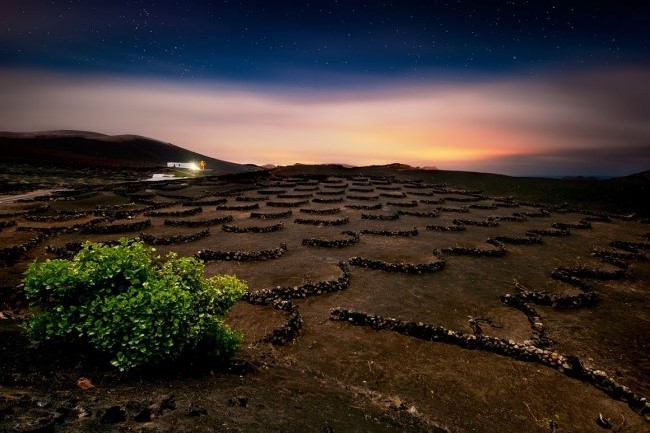
Lanzarote is different from the other Canary Islands, and different from anyqhere else on the planet. Lanzarote han an unusually striking appearance. Often described as lunar or Martian-like, the barren landscape is the result of the island´s volcanic origins. Because the dry climate and little erosion, the stunning terrain looks much like it did right after the last major eruptions in the 18th and 18th centuries.
It is located 70 miles off the coast of Africa making it is most easterly of the Canary Islands. Approximately 12 miles wide (19 kms) and 38 miles long (60 kms) ; it is the fourth-largest of the islands covering around 312 square miles (807 square kilometers). The climate is sunny with an average temperatura of 77º Fahrenheit ( 25º Celsius). Beautiful weather, Sandy beaches, dramatic scenery, nice people, good wine and food make this a perfect year-round destination for those wanting to get away for a holiday.

The first eurpoean visitor was Lanceloto Malocello, a Genoese sailor, who landed in the early 14th century. The real european conquest began in 1402 and was led by Jean de Bethencourt, under the service of Henry III, King of Castille. By the end of the 15th century the Spanish had conquered all seven islands, but not without resistance from the Portuguese who also fought for ownership in the midl-1400s.
With the Canaries being the word´s most westerly charted point, the islands became the last stopping point for the explorations of Christopher Columbus before venturing into the unknown. For the next several centuries, the islands became a bridge between the Old and New World. In the 17-19 centuries, the Canaries experienced economic ups and downs due to their dependence on various crops. Sugar became the first staple crop but profits declined with the arrival of cheaper sugar from the West Indies. Grapes became the main crop, producing a sweet White wine called Malmsey (Malvasia), which retains worldwide recognition.
In the mid-19th century the Canaries were given free port status, which lowered duties and trade barries, Las Palmas and Tenerife became two of the world´s busiest ports. The local government, interested in developing tourism, began to improve the basic infraestucture of island facilities including the airport. With the introduction of the banana crop as a major export and the increasing growth of tourism, the Canaries continue to have a stable economic base.
Fish is a staple among the islands. Typical local fare is Pescado a la Sal, a fish baked in salt, and Sancocho Canario, a stew made with dried fish, and tapas (appetizers) are also readily available. The Canary Islands are famous for wines cultivated from the volcanic soil.
